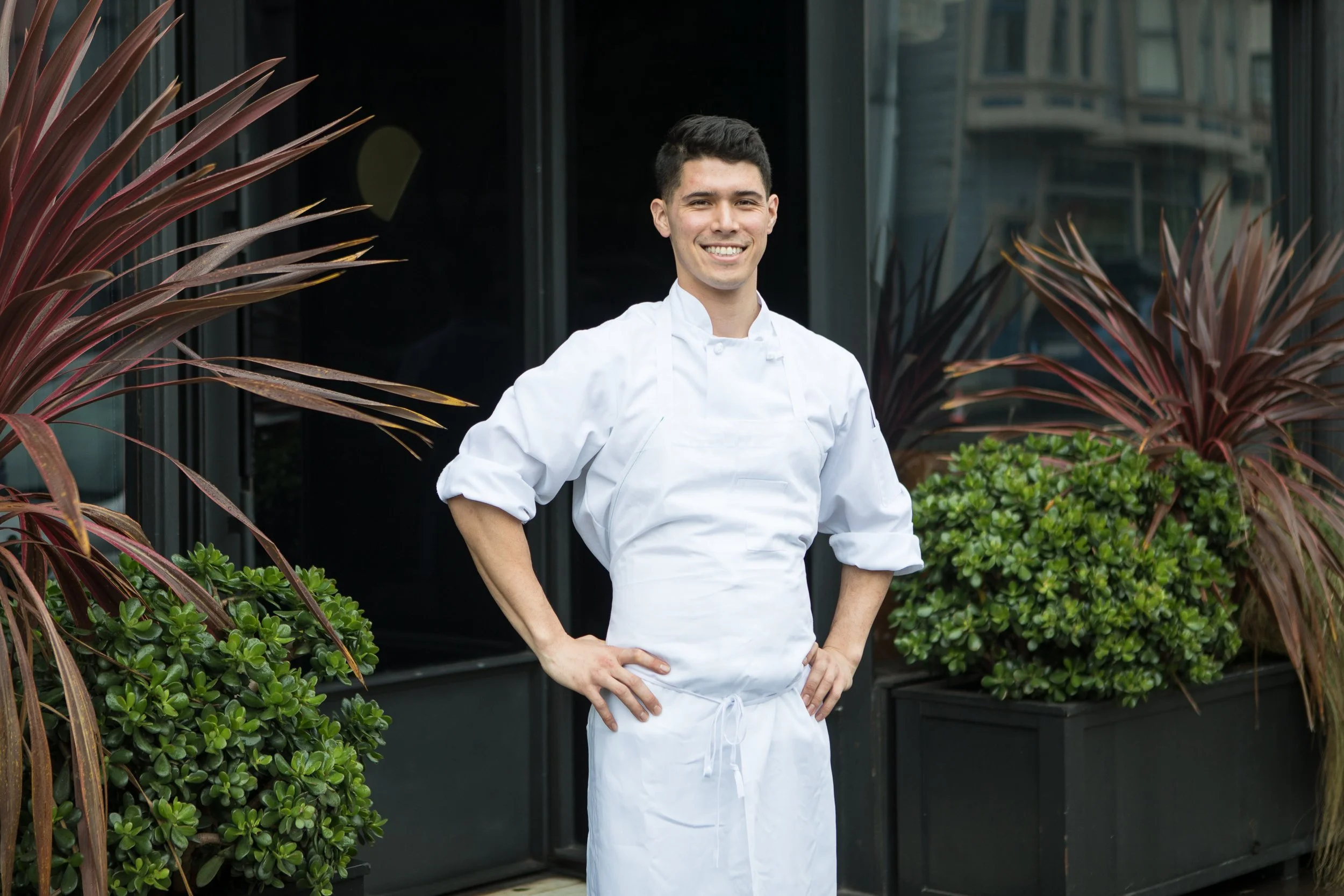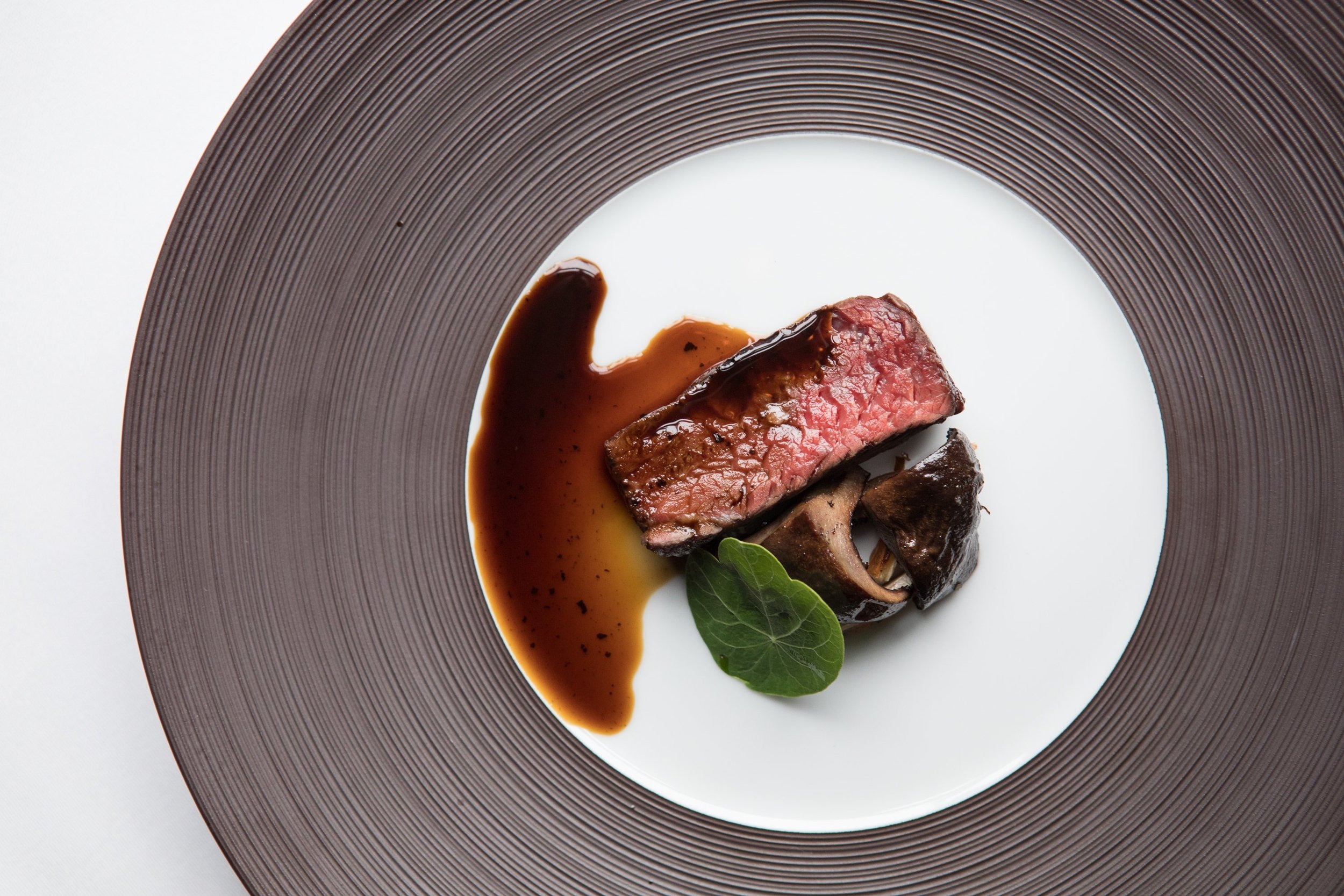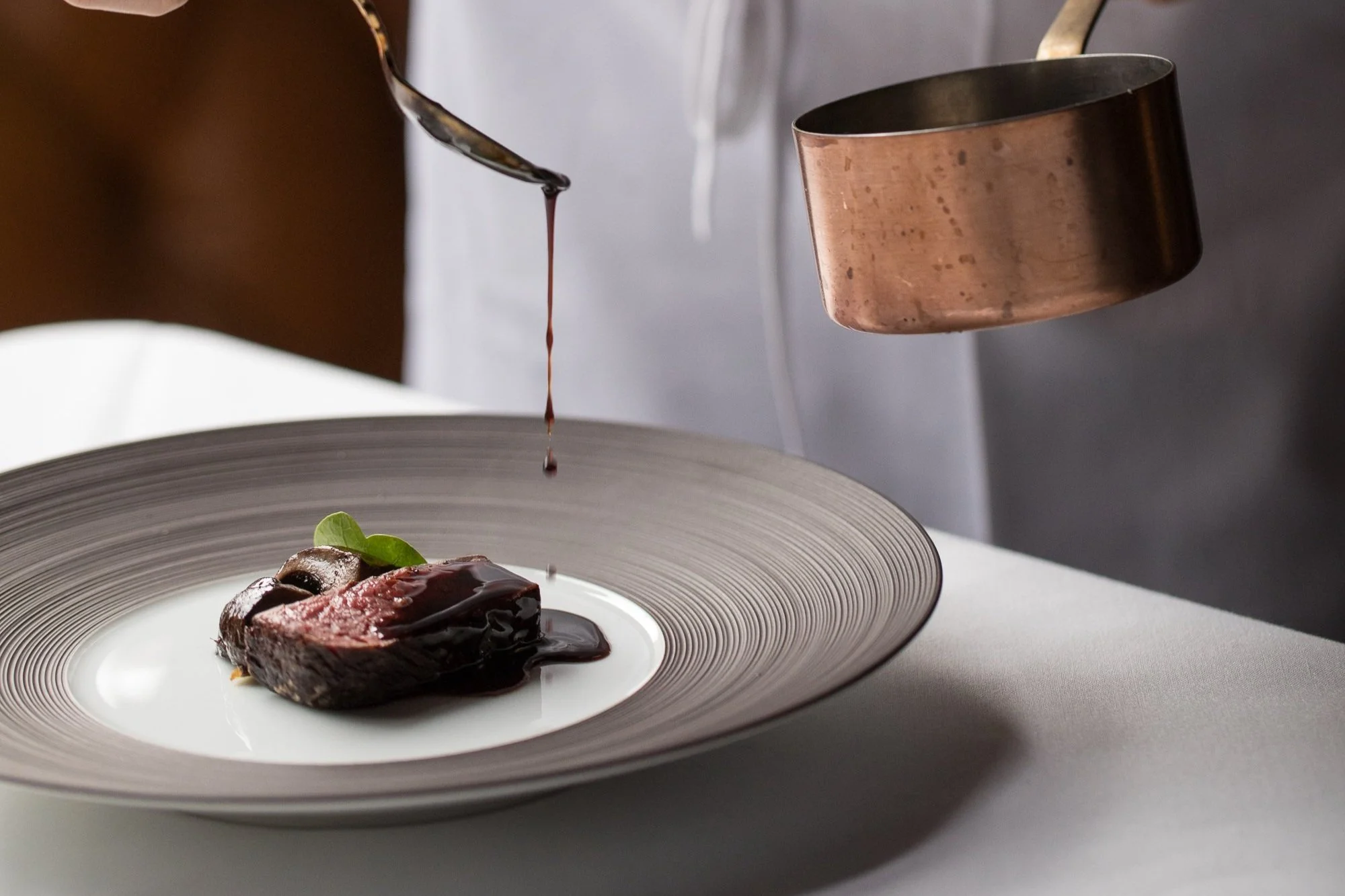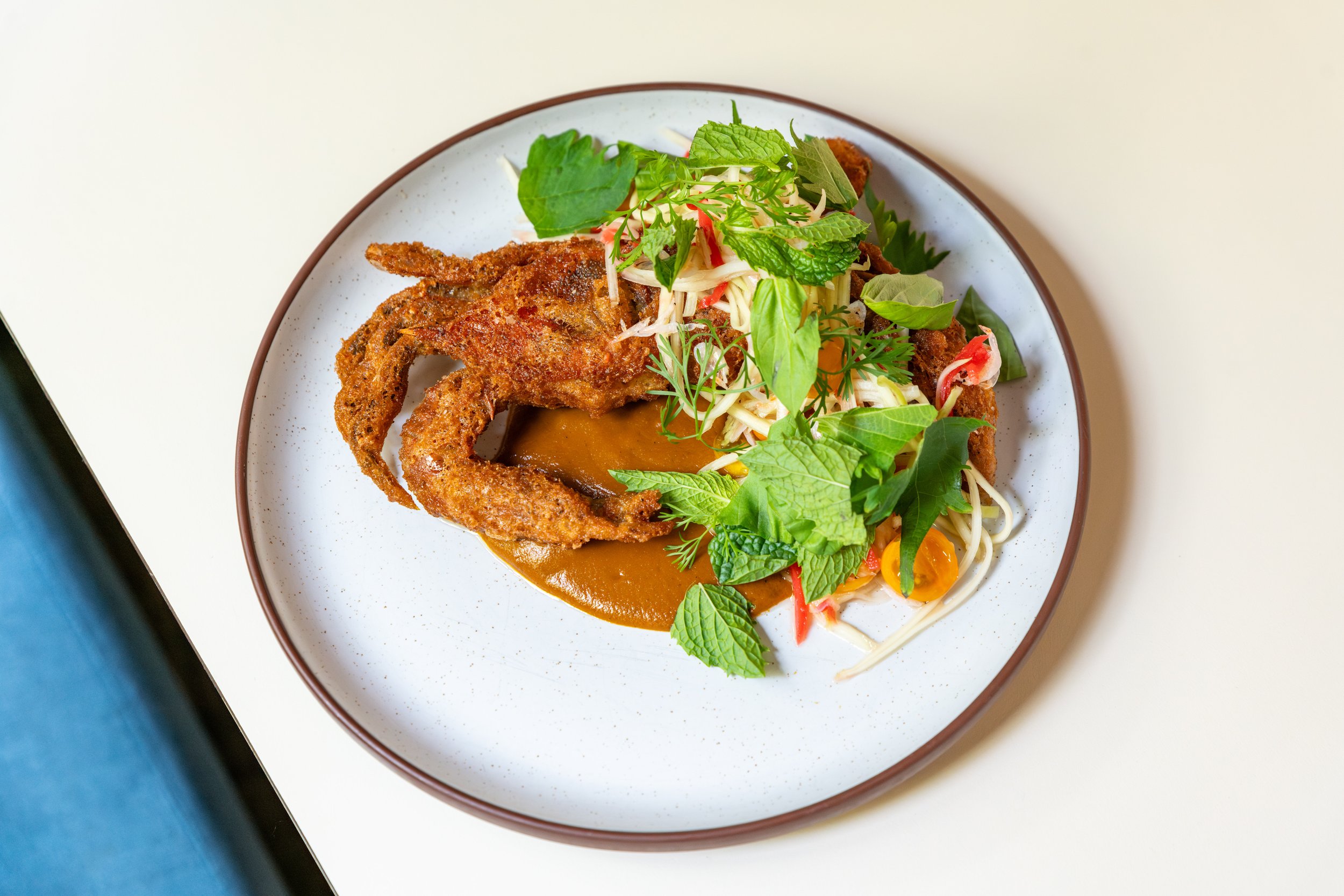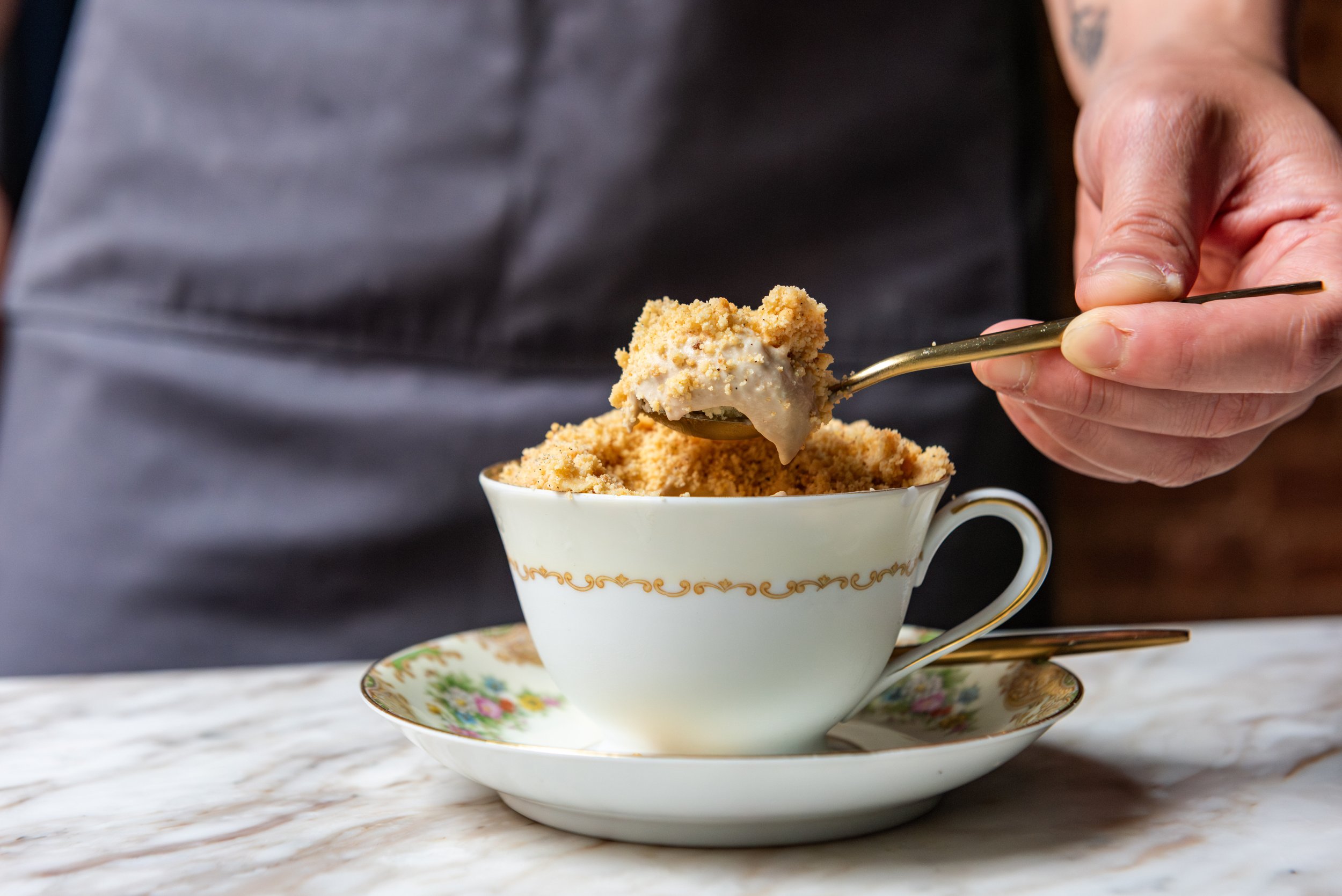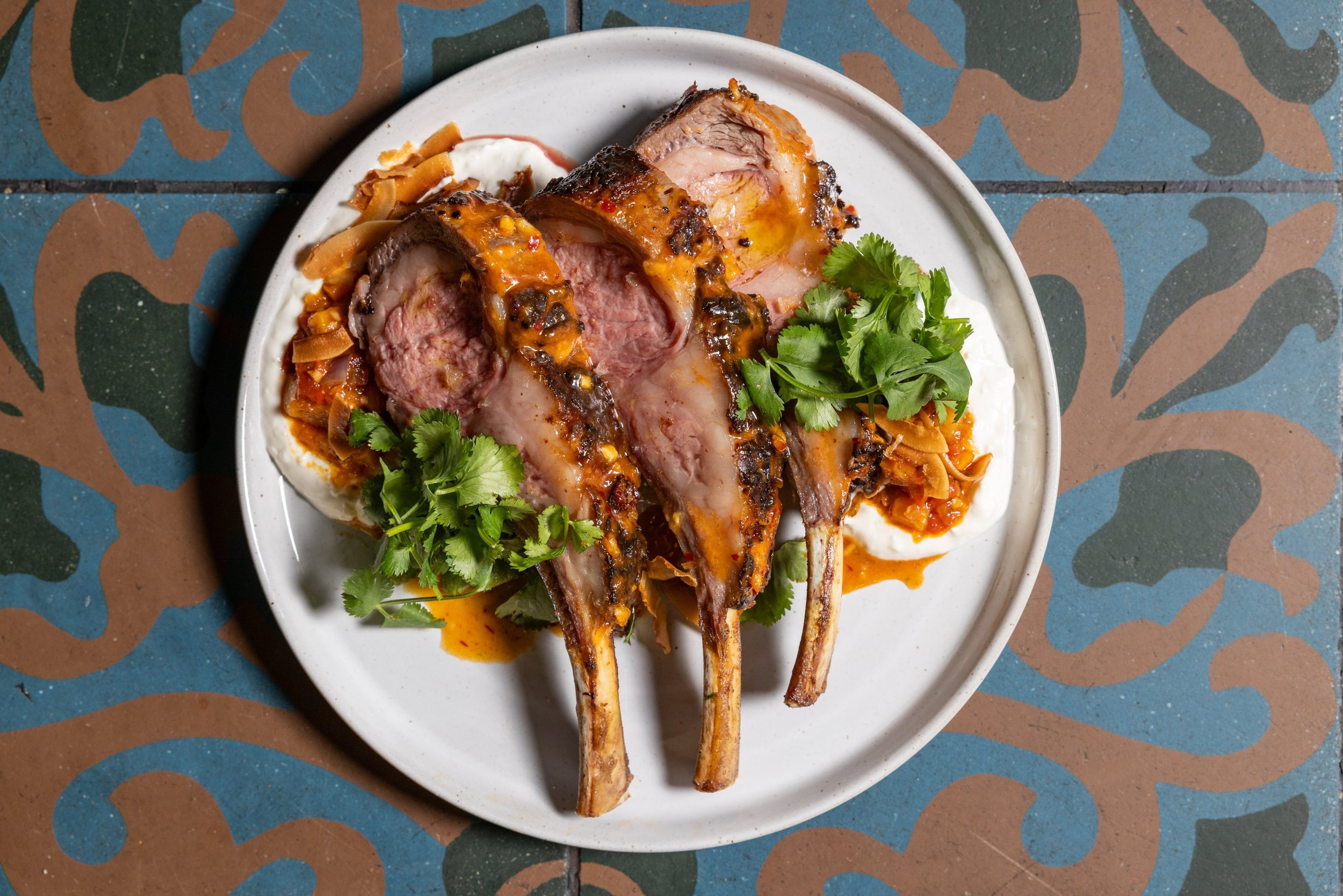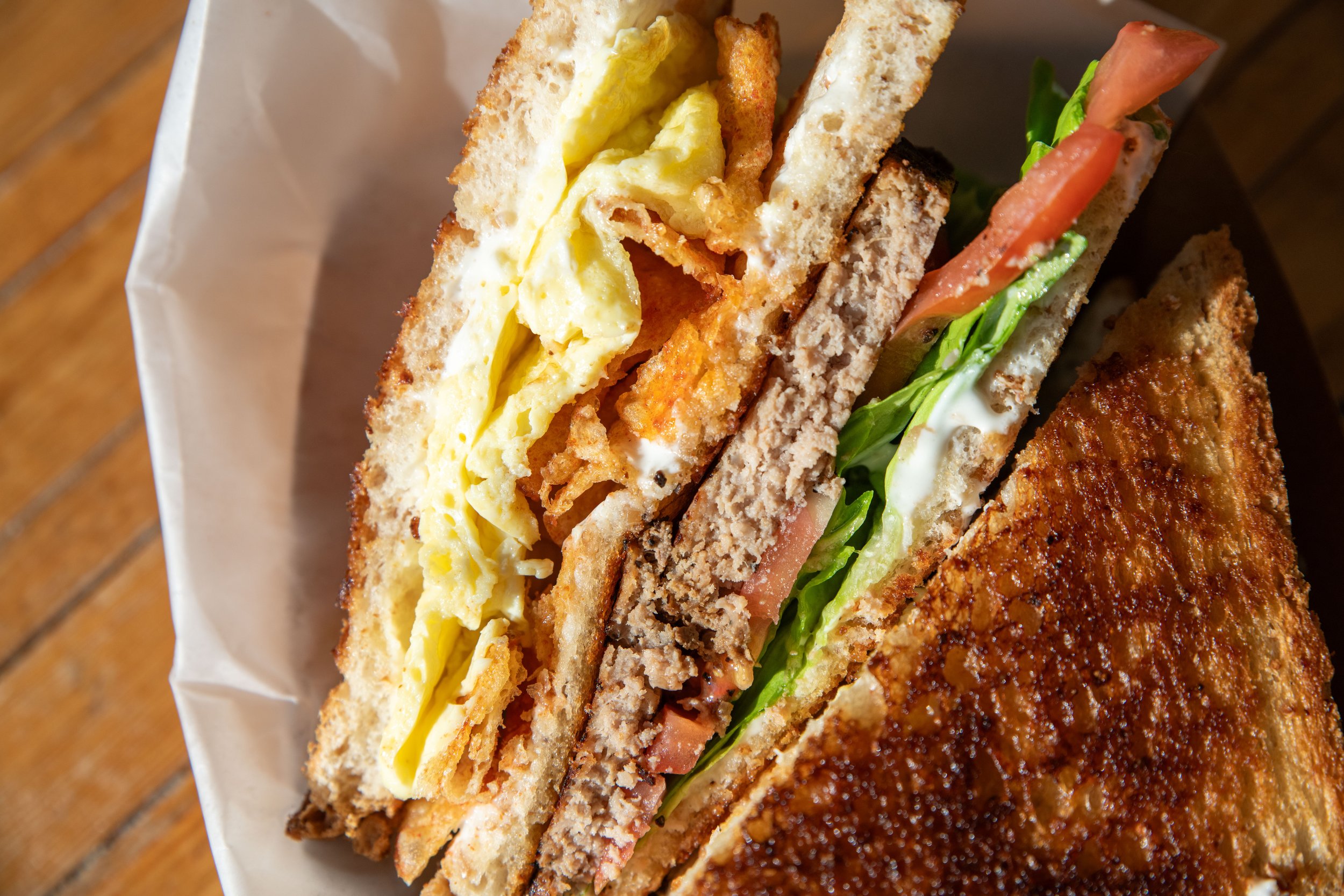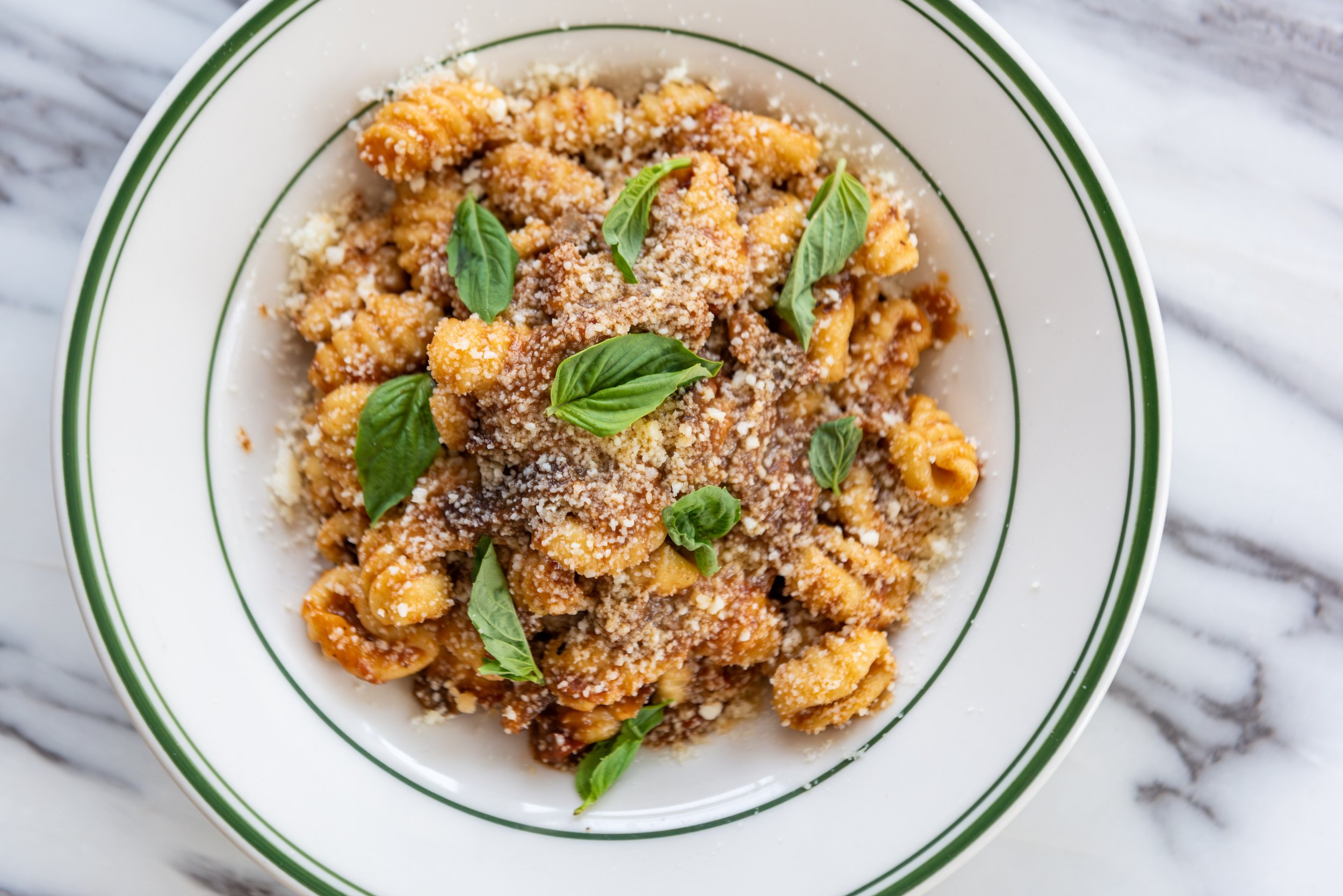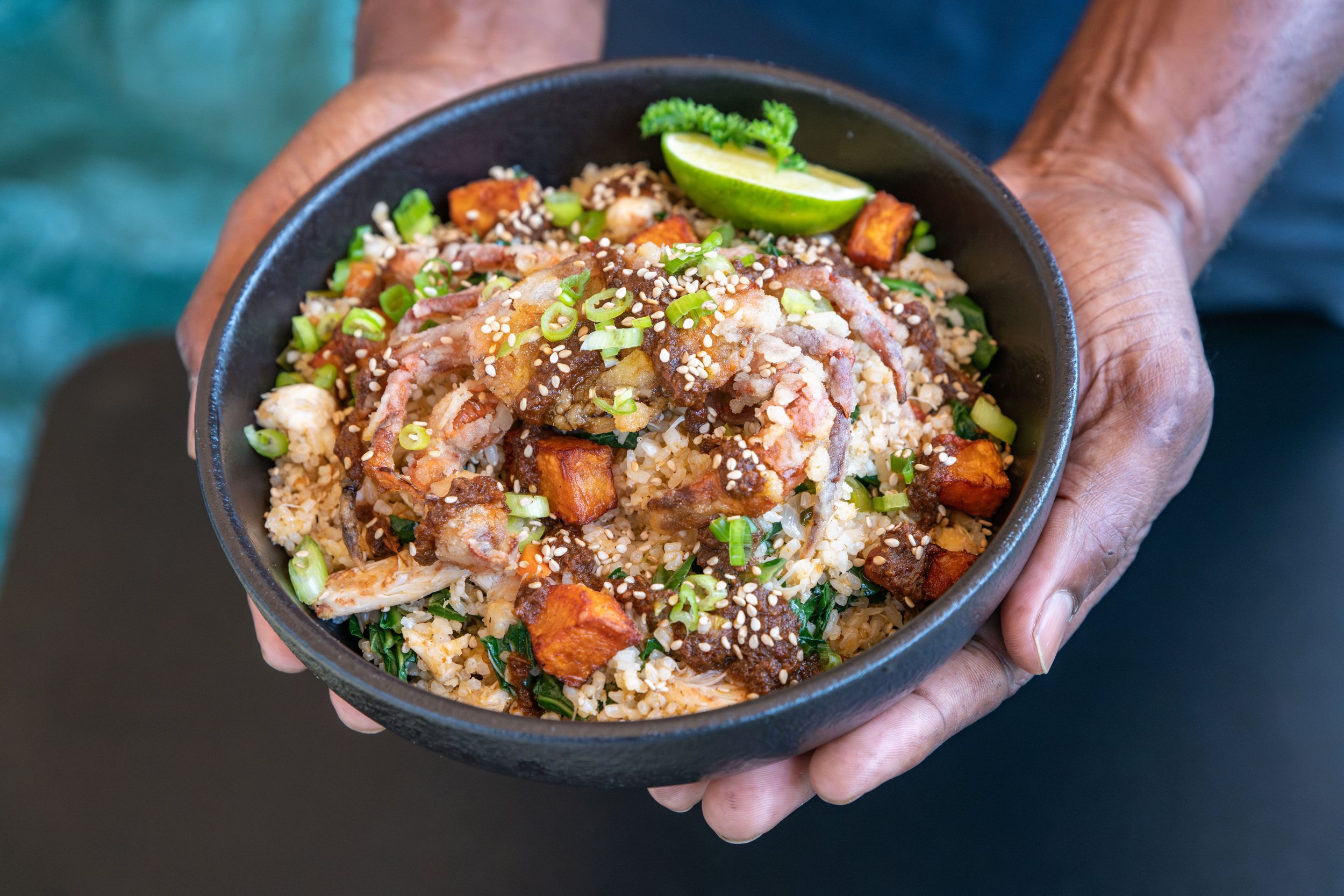Vaca Vieja
The advent of dual purpose animal agriculture and delicious dairy cow at Californios.
Chef David Yoshimura of Californios
David Yoshimura, chef de cuisine of Californios, Val Cantu’s two-Michelin-star restaurant nestled in San Francisco’s Mission district, wanted to build a dish around mushroom and meat.
The blocks he used for this carne asada are rib-eye steak, saffron milk cap mushrooms, dates, and a beef-mushroom-chipotle jus. All ingredients were impeccably sourced, of course, but the beef was bit of a change-up from the usual A5.
“Wagyu beef is rich and heavy, and I wanted the opposite of that,” says Yoshimura, who opted for dry-aged dairy cow beef instead. “It’s older and has a more distinct and interesting yellow fat layer. There’s a little chew, but it has great texture with dry aging.”
Sous Chef Nick Razatos and Yashimura each had experienced vaca vieja while cooking in Spain.
Dry-aged Dairy Cow, Saffron Caps, Beef-Mushroom-Chipotle Jus, and Dates
Dry-aged Dairy Cow, Saffron Caps, Beef-Mushroom-Chipotle Jus, and Dates
Yoshimura credits Claire Herminjard, co-founder of Mindful Meats in Marin County, for making dairy cow meat locally available. Working cows, as they’re sometimes known, can provide milk for six years, and some even as long as 14. In contrast, conventionally raised cattle are usually slaughtered after just two years. Because retired dairy cows have been pasture-raised and live longer, Yoshimura believes it’s a more respectful way to source beef. The model employed by Mindful Meats is called dual purpose organic animal agriculture.
Dual purpose beef is less expensive than other premium, primarily grass-fed beef (Herminjard’s cows are also fed a grain mix during milkings). A whole rib-eye from Mindful Meats goes for under $300. Herminjard’s herds are mostly Holstein and Jersey, but from the sourcing of additional dairy cows from small local farms, she’s preserving heritage breeds that were well on their way to being put out to pasture permanently. The relationship between Californios and Mindful Meats is subversive. They’re upending contemporary agricultural models in favor of next-level sustainability—and flavor.

